A beautiful day on Cotopaxi
Berättelse om bestigningen av Cotopaxi, 5.897m, Ecuador, i december 2010. De var två veckor i Ecuador och målsättningen var att bestiga Rumiñahui (4.631m), Cotopaxi (5.897m) och avsluta med Chimborazo (6.267m). Texten är på engelska.
Av: andre hangaard
Third time to Cotopaxi
Just a couple of minutes after KLM's big MD11 took off from Guayaquil airport we could spot the huge, snow covered volcanoes when the aircraft entered the Avenida dos Volcanoes on it's 30 minutes flight to Quito, the capital city of Ecuador. We fought to get a glance out through the small windows on the left side of the airplane and there they were; Chimborazo, Cotopaxi and the Illinizas. Although it was rather cloudy and far from clear skies we could immediately identify that there was a lot more snow this time than the last time I visited Ecuador which was ten months ago.
Returning to a mountain for the third time was for me a significant undertaking and with the latest weather reports still ringing in my head which declared lot’s of rain and large amounts of fresh snow it was with a slightly nervous feeling I scanned the silhouettes of those mountains I had been thinking about every day during the last ten months. The latest Cotopaxi report called for snow as low as to the parking lot at 4.500m. That did not sound too encouraging.
Although my friend Johan and me this time chose to go during December, the period of the year where the odds were suppose to be among the best and the possibility to summit would be higher than during the rest of the year.

The weather in Quito deserves alone to be mentioned. In Quito they say that you can experience four different seasons on one single day and that is really the truth. In the morning when you wake up the Pichincha-range is hiding in thick fog. At noon you can sit at the Plaza Foche sipping an ice cold Pilsener, gazing in the sun with just a t-shirt, getting your face all red while in the evening you go out with your down jacket and freeze in your sneakers.
December was no exception to this and although the weather sites on the web all declared rain day in and day out, we experienced nice and sunny days while hanging around and acclimatizing in Quito. On top of this the weather actually did improve during these four days we prepared for our Cotopaxi climb which made us extremely happy and full of expectations.
After a nice hike up to Rumiñhaui Central (4.500m) in the Cotopaxi National park together with our guide Cristian Erazo from Climbing Tours on Avenida Amazonas, on which we actually got into a mixture of snow and rain up at the summit, we felt ready for our mountain and had Cristian take us once more to the National park, which is a two hours drive south of Quito. An arranged “taxi” drive to the parking lot at up at 4.500m at the Cotopaxi National park costs around USD90 from the Mariscal area in Quito.
This was actually my third time on Cotopaxi. In May 2005 we were on a guided tour but had to turn around due to less fortunate weather conditions and a far too late start.
In February 2010 I set out for a solo ascent and my plan was to set up my tent half the way up on the glacier. On this attempt I experienced stomach disease, a broken tent, furious storm winds and a bivy in an icecave up at 5.400m. One could easily claim that I’ve had a struggle with Cotopaxi. Even this time Cotopaxi did not surrender without putting up a fight.
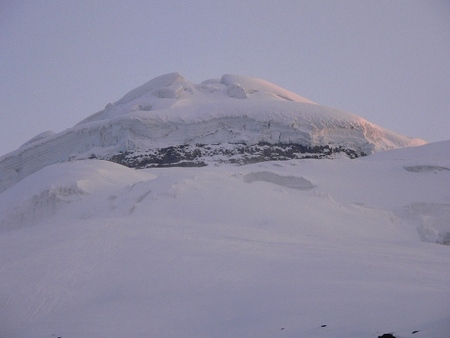
Problems on the route
Our plan was to spend two nights in the Refugio Rivas hut. The first day we went up to the beginning of the glacier and did some practicing and scouted the route. I was surprised to see how much the landscape had changed only during the last ten months. The very well equipped and comfortable Refugio Rivas hut was very busy with fellow climbers who all were full of expectations and the two dining rooms were crowded.
Early in the morning all the climbing parties who had left just after midnight came back, grumpy and with no smile on their faces. It turned out that the most important snow bridge crossing a huge crevasse up at 5.500m had collapsed the day before. Suddenly the well-distinguished track disappeared in the void and an enormous crevasse appeared. Even the guided parties were forced to turn around as it was too difficult and dangerous to search for alternative routes together with clients in the middle of the night. This was not exactly the news we wanted to hear.
Later during the day we spoke with some guides who had been checking out the crevasse in daylight and they claimed it would be possible to cross this big obstacle to the left.
This gave us some comfort but we realized that the night’s upcoming adventure would not run as smoothly as we had thought in the beginning, even though the weather was at it’s best with almost no wind at all.

Windless night
Johan and I stepped out in the night just after midnight. The conditions seemed perfect when we strapped on our crampons just outside the hut. The air was not cold and it was very quiet. We were the first party leaving the refuge as we did not want to have any stress and we set a slow but steady pace. The snowfield began just behind the hut and zig-zaged up the steep slope to the beginning of the ice field. Usually this part is covered with red soft volcanic sand which makes this part of the climb a big hassle.
After entering the glacier we climbed steady and gained altitude nice and easy. The headlamps of the other parties glimpsed in the dark and the atmosphere was fantastic.

The big crevasse
After around three hours we came to the critical spot with the collapsed snow bridge. Before us and after us there were several climbing parties, all slowing down considerably and quickly we were queuing up.
Guides were shouting to each other in Spanish while their clients stood abandoned beside the trail not knowing what was happening. It was difficult to tell in the dark. Tracks were scattered all over the area and it seemed some parties already decided to turn around.
Two groups of around five-six climbers were heading to the right. Obviously they gave up the idea of crossing the crevasse and continued to the west to reunite with the old route which was one of the options. We stood a while on the icy slope and considered what to do although we realized we could not linger too long at our spot as it began to get cold and time was running.
The American party before us decided to head down as they were freezing badly.
The larger party who went for the old route had disappeared in the dark and as we were not 100% sure of their intentions we decided not to follow their tracks.
We decided we were going to check up the area to the left of the crevasse which we’d been told the day before.
Around fifty meters to the left we met another party which we bypassed and after a while we suddenly came to a passage where the huge crevasse narrowed and suddenly a way through this labyrinth open up in front of us. With great relief we quickly passed the crevasse and continued some steep slopes up on the other side of this critical section.
A small track was visible and it took us through a magnificent landscape of huge ice blocks and gaping crevasses. We already now were looking forward to see these fantastic ice creations in daylight during our descent.

The summit within reach
Due to our events up at the big crevasse we lost a lot of time and soon it began to get light. Around 100 meters below the summit we faced the last obstacle which was a steep icy gully of perhaps 20 meters and a declining of perhaps 50° at the top. (UIAA I+) We climbed this crux easily, front-pointing and emerge onto the final slopes beneath the summit.

We entered the summit platform with great joy. It was past eight o’clock in the morning and some clouds were already starting to build up close to the crater. The sun was bright and we could see the huge Chimborazo in the south and the Illinizas and Antizana on the other side.
I think we stayed around 40 minutes on the summit, taking pictures and have cups of hot tea.
It was not really cold and the wind was not strong.


The descent went rather uneventful. The snow had become slightly soft when we left the summit of Cotopaxi at 08:50. We were the last one’s descending that day. We did not stress but enjoyed the great landscape in the icefall and had to stop and stand and just look at that incredible scenery which was folding up all around us many times during our descent. I really love this mountain.
At noon, exactly twelve hours later, we walked into the Refugio Rivas, very tired but awfully content with satisfied smiles on our faces. We had a great climb and were blessed with very good weather conditions. Now our plan to continue and challenge Chimborazo did not seem as an impossible undertaking.
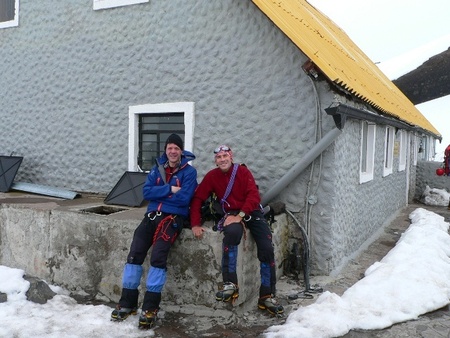
All photos by Johan Dahlström and André Hangaard
Läs mer
Forumdiskussioner
- Klättring allmänt Best Beginner-Friendly Climbing Routes in Sweden?
- Klätterkompis Looking for a climbing partner in south sweden end of March
- Expeditioner Försäkring för trekking peaks Indien och Nepal
- Klättring allmänt Toppsäkra klätterträd
- Alpin / Bigwall The Nose
- Klättring allmänt Five Ten Anasazi lace - Alternativ/Alternative
- Klätterkompis Klätterkompis i Lund
- Expeditioner Vandra från Örnsköldsvik till Norrköping

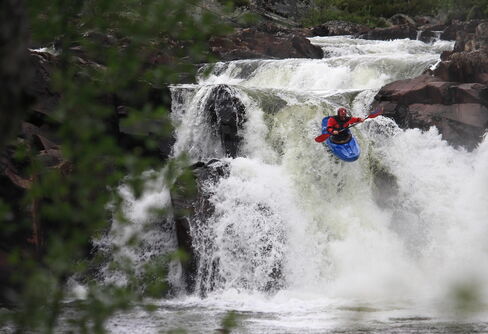
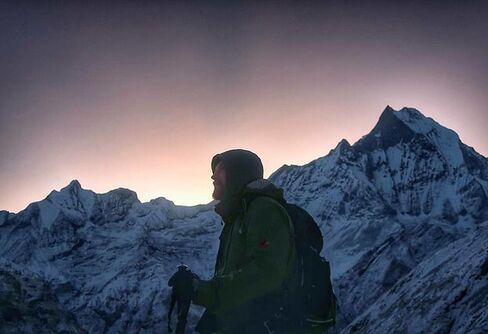




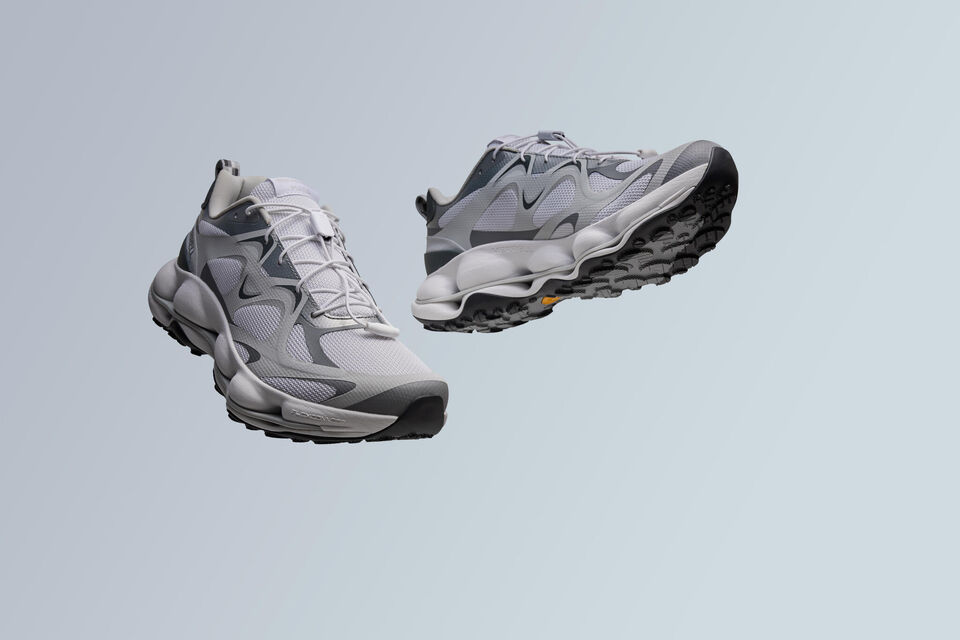
Häftiigt och stort GRATTIS!. Var där själv 2001. se reseberättelse, sid 6 ,kategori klättring )Visst var det en skön stämning och iskall Cola i Refugio Rivas.